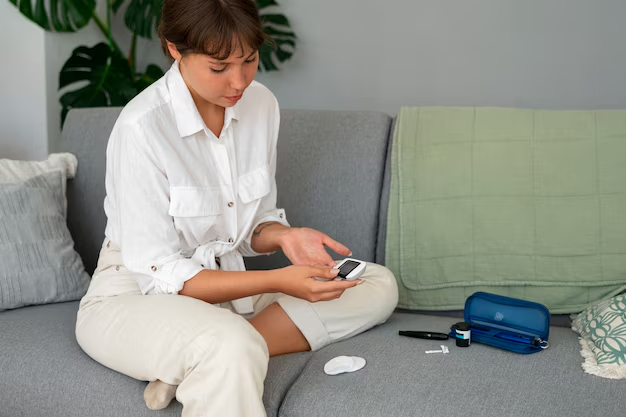Curious About Checking for Diabetes at Home? Here's How to Start
Wondering if you might have diabetes can be stressful, but gaining clarity is crucial for both your well-being and peace of mind. Fortunately, you don't need to immediately rush to a doctor's office for an initial test. Here’s how you can begin monitoring and checking for diabetes from the comfort of your home.
Recognizing the Symptoms
Before considering testing, it's essential to recognize the common symptoms of diabetes, which include:
- Increased thirst
- Frequent urination
- Unexpected weight loss
- Fatigue
- Blurred vision
These symptoms can vary in intensity, and their presence warrants further investigation.
Using a Home Glucose Monitor
The most direct method to check for diabetes is using a home glucose monitor. Here's a step-by-step guide:
- Purchase a Reliable Kit: Look for a home glucose monitoring kit that's easy to use and has good reviews.
- Fasting Blood Sugar Test: Start by measuring your blood sugar level in the morning before eating (fasting blood sugar). A level above 126 mg/dL on two separate occasions suggests diabetes.
- Postprandial Blood Sugar Test: Measure your blood sugar two hours after eating. A reading above 200 mg/dL is an indicator of diabetes.
Consider Convenience Over-the-Counter A1C Tests
Another option is an HbA1c test, which reflects your average blood sugar levels over the past three months. Kits are available over-the-counter for home use, providing a more comprehensive picture.
Tips for Accurate Testing
- Wash hands thoroughly before testing to prevent contamination.
- Follow the instructions carefully to ensure accurate results.
- Record your results consistently for tracking over time.
When to Consult a Healthcare Professional
Home testing serves as a preliminary step. It's crucial to consult with a healthcare provider to confirm any findings and develop a management plan. They can provide guidance on lifestyle changes, treatment options, and further testing if necessary.
Navigating Financial and Support Resources
Understanding you may have diabetes can be daunting not only health-wise but financially. The costs for continued testing, medication, and possible lifestyle changes can add up. Here's where financial assistance programs and resources can help:
Financial Support Highlights
🏥 Government Aid Programs
Many governments offer health subsidies or diabetic care programs. Check eligibility for programs like Medicaid or Medicare in the U.S.🎓 Educational Grants
Scholarships and education programs about managing diabetes can empower you with knowledge and potentially reduce costs.💳 Credit Solutions for Medical Expenses
Certain credit cards offer low-interest rates or deferred interest on medical expenses, helping manage costs more effectively.💡 Debt Relief Options
If diabetes costs impact your financial stability, consider consulting with a debt advisor for potential relief options.🏦 Health Savings Accounts (HSAs)
Using an HSA can provide tax advantages and help cover out-of-pocket expenses for diabetes care.
Taking the first step by testing at home can lead to better health outcomes and prevent complications associated with diabetes. Investing in your health doesn’t have to break the bank if you explore available financial resources and support programs tailored to ease the burden of healthcare costs.
